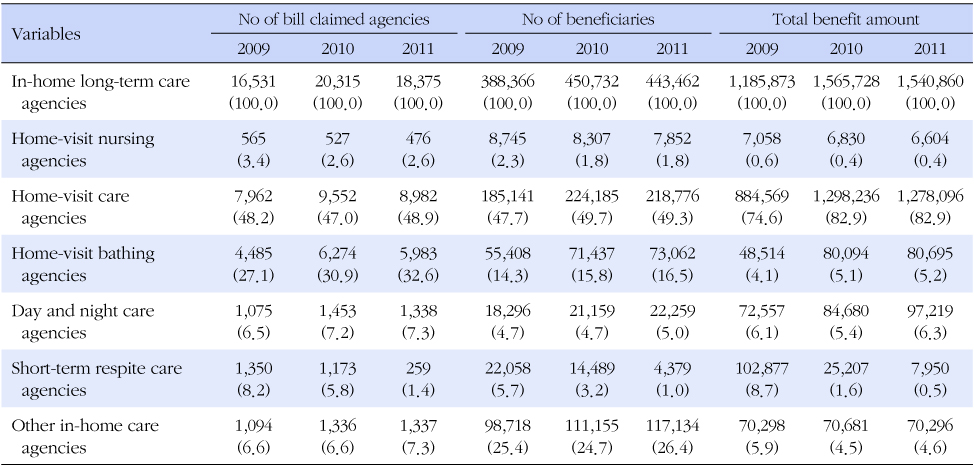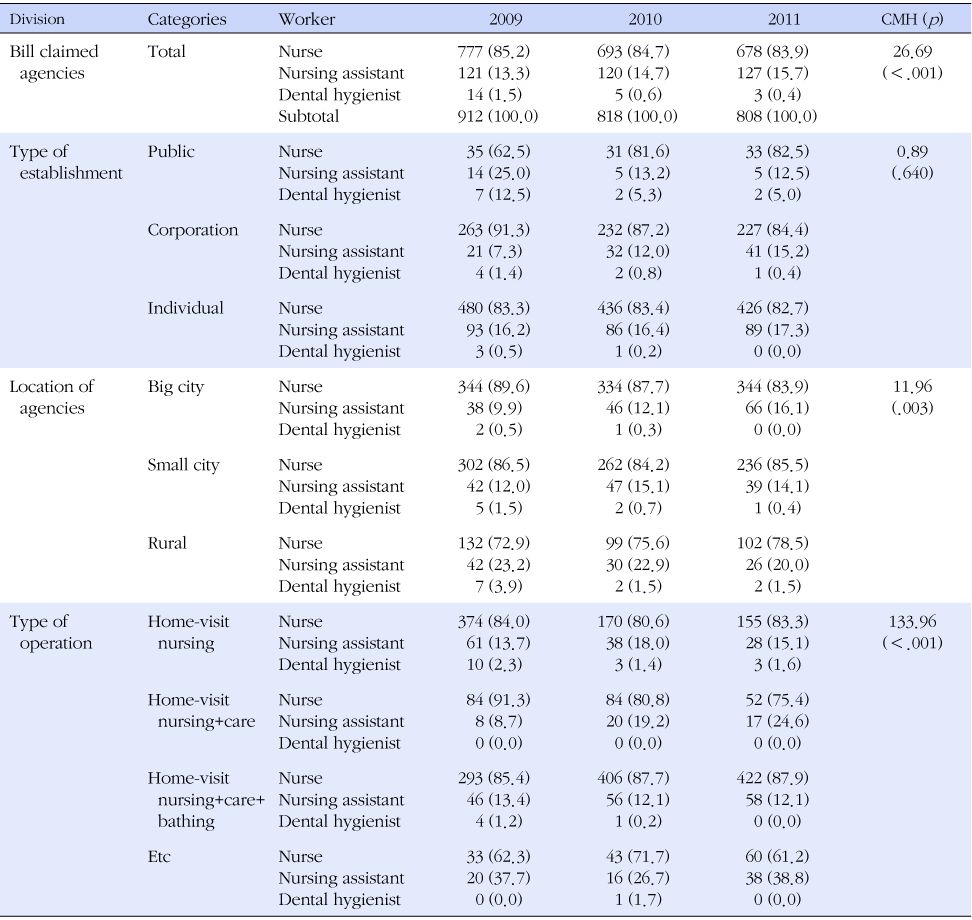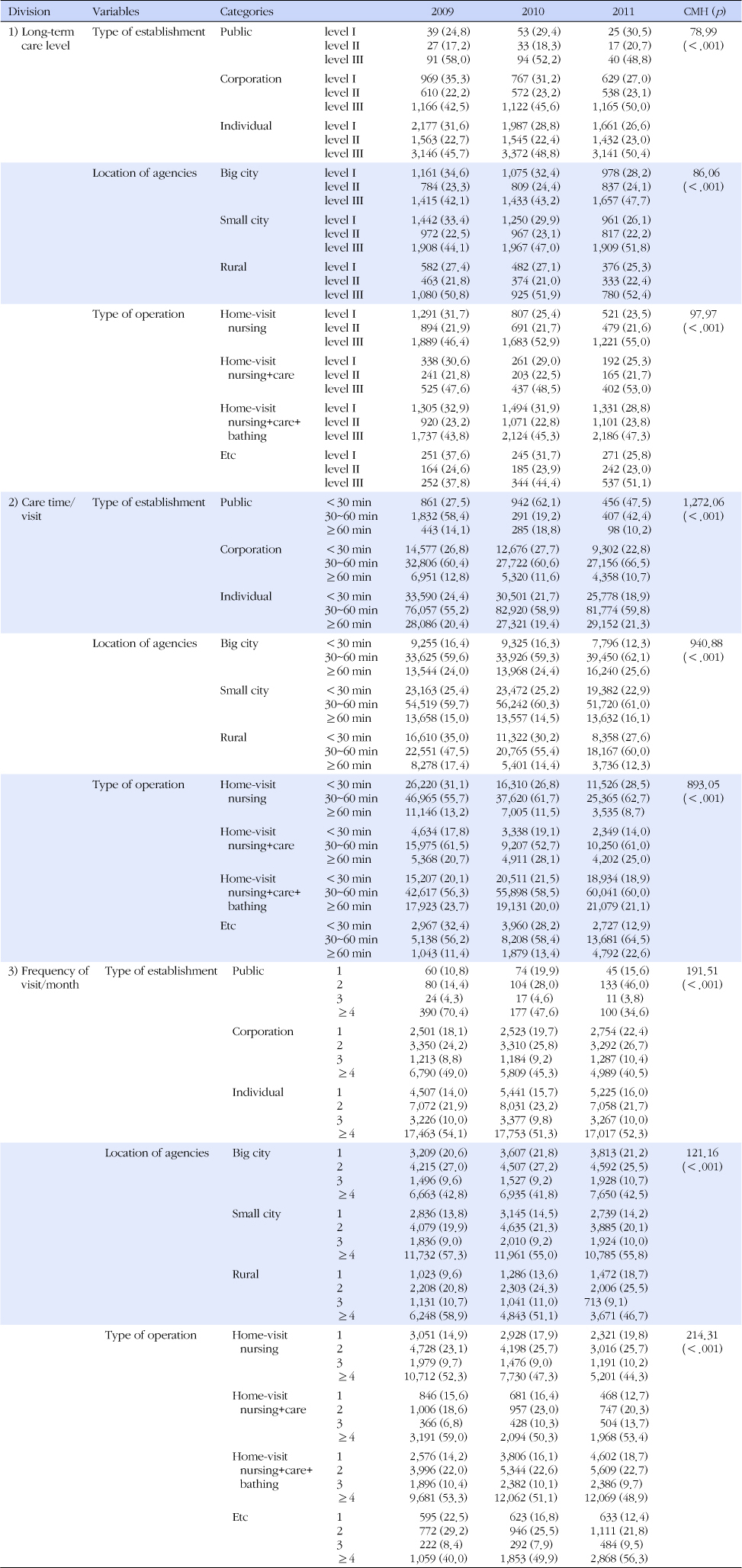References
1. Bang EJ, Yun SY. Health needs of the elderly in long-term care facilities: Using RAI-MDS-FC. J Korean Acad Community Health Nurs 2010. 21(2)263–272.
2. Jung YS. A study on home visiting nursing care and medical care utilization in the elderly patients with longterm care 2012. Busan: Inje University; Unpublished doctoral dissertation.
3. Kim CJ, Kim YS, Kang HY, Park JH, Sun MS, Woo YJ, et al. Development of home care quality indicators( hcqis) at demonstration project of elderly care insurance program in Korea. J Korean Gerontol Soc 2008. 28(2)377–394.
4. Kim CM, Lee JY, Ko RJ. Quality dimension of long term care hospital. J Korean Acad Community Health Nurs 2009. 20(2)243–250.
5. Kim EK, Kim YM, Kim MA. Estimation of nursing costs based on nurse's visit time for long-term care services. J Korean Acad Nurs 2010. 40(3)349–358.
7. Kim KB, Lee HK, Sok SR. Activities of daily living and nursing needs of the elderly in nursing home. J Korean Acad Community Health Nurs 2009. 20(1)1–11.
8. Kim MH. Roles of visiting nurses defined based on long-term care insurance regulation for the elderly. J Korean Acad Public Health Nurs 2009. 23(2)232–250.
9. Kwon JH, Lee JS, Han EJ, Park CY. A study of policy development to prevent ill-health and improve well-being for the elderly (I) 2008. Seoul: National Health Insurance Corporation;
10. Kwon MY, Lim JY, Lee YH, Kim HS. A study of nurses' perception of the visiting nursing services of long-term care insurance. J Korean Acad Public Health Nurs 2010. 24(1)5–18.
11. Lee JS, Han EJ, Kang IO. The characteristics and service utilization of home nursing care beneficiaries under the Korean long term care insurance. J Korean Acad Community Health Nurs 2011. 22(1)33–44.
12. Lee TW. Economic evaluation of visiting nurse services for the low-income elderly with long-term care needs. J Korean Acad Nurs 2004. 34(1)191–201.
13. Lee Y. Starting longterm in-home care agency by nurse. Korean Nurse 2008. 47(1)42–45.
14. Lim JY, Kim EJ, Choi KW, Lee JS, Noh WJ. Analysis of barriers and activating factors of visiting nursing in long-term care insurance. J Korea Contents Assoc 2012. 12(8)283–299.
15. Ministry of Health and Welfare. Notification No. 2011-72 of the MOHW about long-term care costs in National long-term care insurance 2011. Seoul: Author;
16. Moon GJ. Current status and problems of home visit nursing service within long term care insurance 2011. Seoul: Sungshin Women's University; Unpublished master's thesis.
17. National Evaluation Team. Interim report of progress briefing paper: Cost-effectiveness measuring effect: Emergency bed-day use 2007. Hertfordshire, UK: University of Hertfordshire Press;
18. National Health Insurance Corporation. The collection of long-term care insurance laws 2008. Seoul: Author;
19. National Health Insurance Corporation. The 2010 quality assessment reports of community-based or home-based long-term care agencies 2011a. Seoul: Author;
20. National Health Insurance Corporation. 2010 Long-term care insurance statistical yearbook 2011b. Seoul: Author;
21. OECD. The OECD health project: Long-term care for older people 2005. Paris: OECD Publications;
22. Park CS. Visiting nurses' services under the long-term care insurance system for the elderly. Nurs Sci 2009. 21(1)64–72.
23. Park MS, Kang SM. Demand prospect of professional workers in execution of the elderly's long-term care insurance -nurse, Social Welfare, care probation professional workers-. Korean Commun Stat 2010. 17(3)423–440.
24. Sung MS. A study on policies for the vitalization of the visiting nursing services with the long term care insurance. 1st anniversary of policy discussion for vitalization of the visiting nursing services with the long term care insurance 2009. Seoul:



